My first solo trip outside of Shanghai did not begin well. I had a 06:51 train to catch from Shanghai South (上海南) station on Saturday morning to Hangzhou station. I opted for the slow train, which takes 2.5 hours instead of 1 hour for high-speed trains, because it was only RMB28.5, and it stopped at Hangzhou station instead of Hangzhou East. For some reason, the high-speed trains usually stop at the station further away from the city centre. Hence the choice for the station in the middle of the city, so I can walk or cycle everywhere instead of having to figure out the city’s public transportation. I could Di-di (Chinese version of Uber), but why pay extra when you could walk for free and burn calories.
So anyway back to my morning, a downside to catching an early train was that the metro was not yet open, so I had to Di-di to the railway station. I started calling for a car an hour before my train’s departure time, but apparently there were none in my area (I must also mention that I live very far from downtown). After few minutes dragged into 20, I was not calm at all. I was simultaneously flagging for cabs on the road, but literally all of them had passengers.
With 30 minutes to go, miraculously a car responded to my distress call. It was the first time I asked a driver to drive a little quicker. As he sped down the highway, I reached Shanghai South with 15 minutes to spare, but still had to go through security and find my gate. I cannot stress how important it is to collect your tickets early if you can (especially for foreigners), because the line for manual ticket collection is always long, and is often exacerbated by queue cutting. Luckily I had gone to collect mine a few days ago.


I thought that I made it to my gate by the skin of my teeth, until I saw that the train had been delayed by 40 minutes. What kind of sick joke was this, urgh. Anyway, this was my only train that got delayed. My subsequent trains could not have run more like clockwork.
Taking China’s slow trains are an experience of their own. I had a hard seat ticket, the cheapest of all the seat classes (go figure). If you are used to taking the high-speed trains, boarding a slow train’s hard seat carriage is going to induce a culture shock. The interior was stuffy and rowdy; people were sitting in seats that were not their own and had to constantly shift; there was trash on the tables; and for some reason the main demographics were very young children and the elderly. I was sat facing an elderly man with his grandson who could not stop fidgeting because they had been on the train since the previous evening.
Along the way, several train staff (or salespersons, I don’t really know who they work for) would walk through the carriages selling products, most of them food related. Their hard-selling techniques were amazing to watch. Usually you could hear them before seeing them. If there were children around, they would offer them a sample because children would happily indulge. The salesperson’s job was even easier if they were selling candy. Once the child ate it, they would keep asking “if it tastes good?”, until gradually their question became a repetition of the statement “it tastes good!”. The confused child would just nod in obedience, and that was when the salesperson would swoop in and ask the child to tell their parents/grandparents to buy it for them.
Since most of them were followed by their grandparents, and grandparents are universally known for loving their grandkids too much, they would give in and buy the candy that nobody actually wanted. If there were no children around, the salesperson would shove the sample right into the passengers’ faces, physically forcing them to try it. Once they did, some would tell them to buy it now that they have tasted it. If you rejected the sample, they would insist it was free and tell you to take one. So you see, there really is no winning. I don’t really have any advice, except for maybe pretend you don’t understand Chinese. Then again to be fair, not all of them were like that.

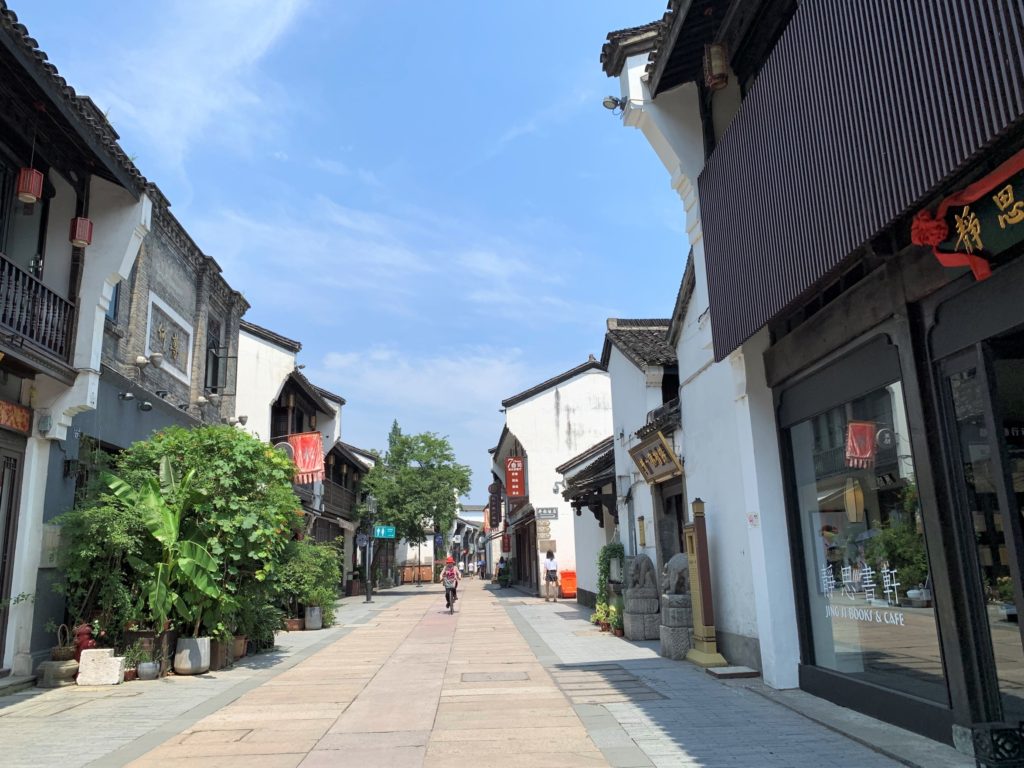
I alighted at Hangzhou Railway station and walked half an hour to my accommodation near Hefang Street (河坊街). I left my bag at the counter of YHA International Youth Hostel and went out to explore. Location wise, this hostel wins because it is located in a quiet alley a few metres from the famous Hefang street, and is in between the attractions around West Lake (西湖) and the railway station.
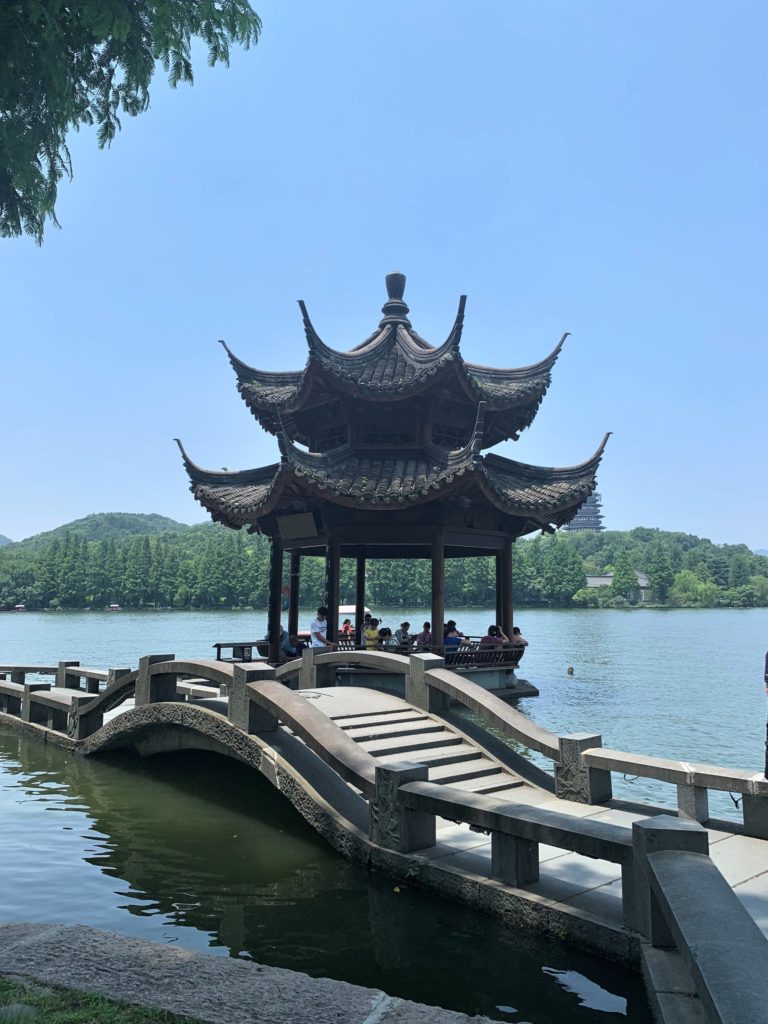
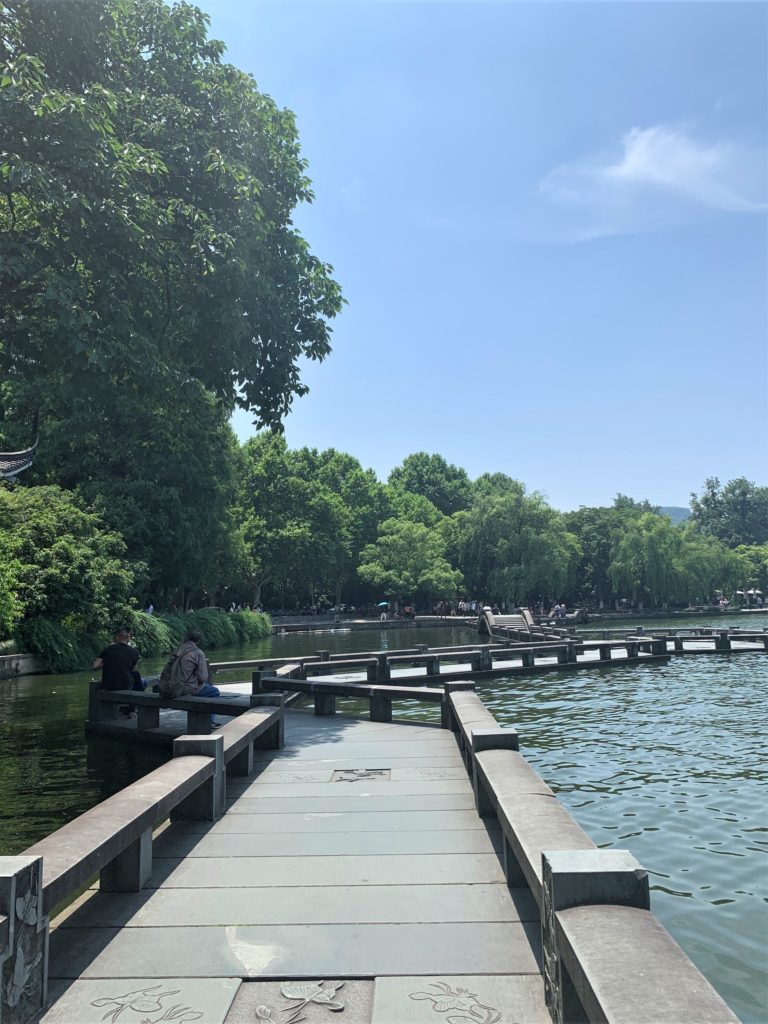
It was a 45 minute walk to Leifeng Pagoda (雷峰塔), which is less tiring than it sounds as West Lake would appear along the way and you could stop to admire the scenery. West Lake harbours many attractions which make Hangzhou a famed historical city in China. It also comes with its own legends, but more on that later.
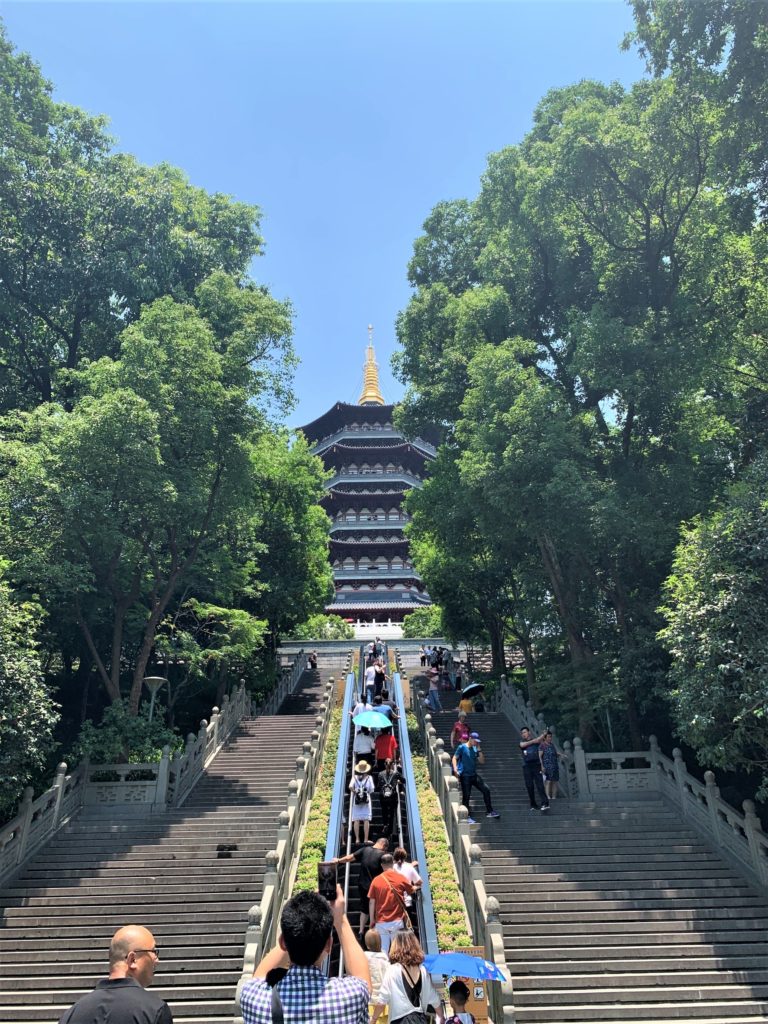
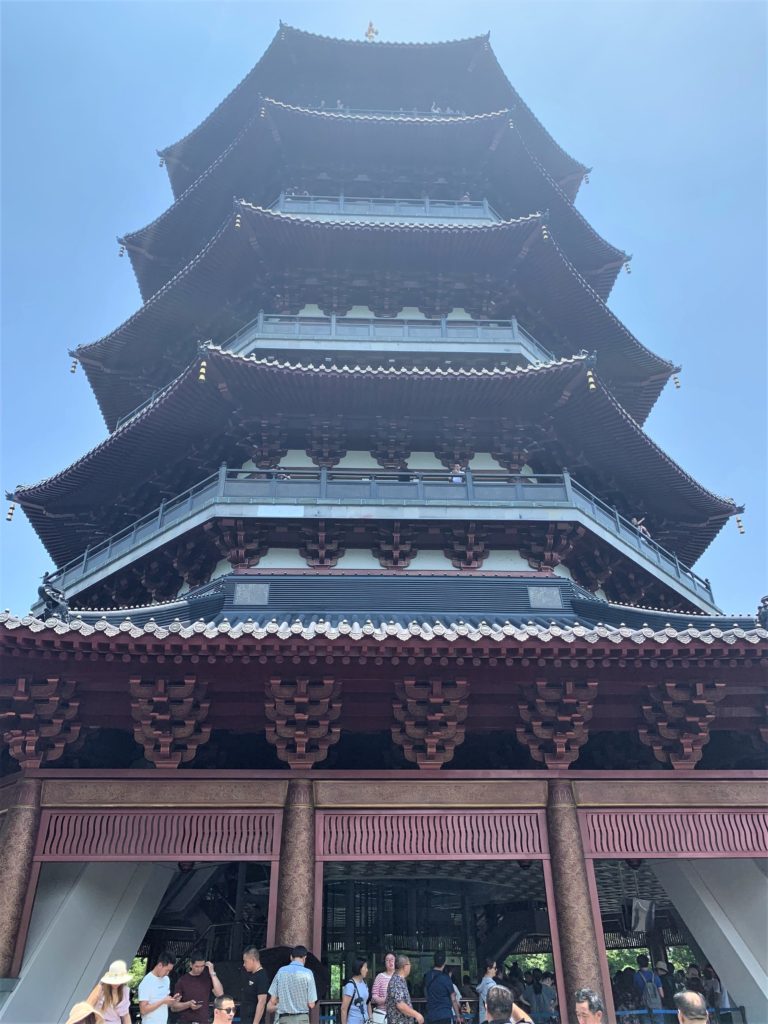
I’m not usually a fan of overly restored or glamorised tourist attractions, such as building an escalator right in front of a centuries-old pagoda. It just seems unnatural. At the same time, I cannot help but wonder how they keep the escalator working outdoors under the scorching sun. The one at my university would malfunction if it got too hot or wet, and it would take months for it to be repaired. There is a lift inside the pagoda, which was the reason for the queue in the top right picture. Honestly given the length of the queue, it would be quicker if you just climbed up the stairs. Entry to Leifeng Pagoda is RMB20 if you are a student. Yasss milk those student benefits.
Bee Debacle
I got tired of walking so I looked for a Hellobike to cycle, since I bought the monthly pass for my daily commute to work in Shanghai anyway. Midway while I was gliding down the streets of Hangzhou, a large insect flew into my face and latched itself on top of my eyebrow. I swatted it off while balancing my bike, and instantly knew I was stung by some sort of bee.
My first reaction was to become furious at the bee for ruining my day. Plus, I don’t even know how it managed to sting me where it did?! I was wearing a cap that covered most of my forehead. I shifted my bike to a safer spot and Baidu-ed (no Google) whether I would die if I just left the sting. For some reason, I actually left it and continued cycling (ohh the stupidity of youth). But the more I cycled, the more I felt the sting swell, and then paranoia about it blinding me set in. Cue panic mode: I searched for the nearest pharmacy, which was 1.2km away, and cycled frantically towards it. My cap was now pulled down to just above my eyes in case any more bees wanted to try anything funny.
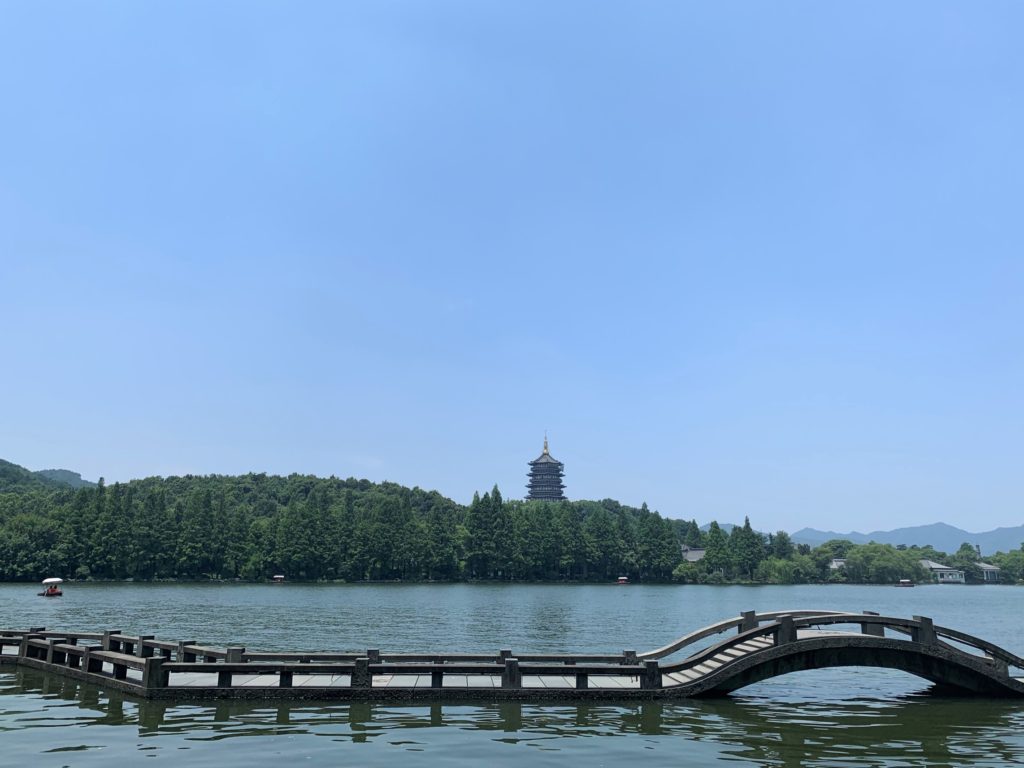
When I reached the pharmacy, an extremely nice middle-aged lady asked me what kind of bee it was. I said I had no idea, I got stung cycling around West Lake. After looking at it, she said it was probably a 黄蜂 and not a 蜜蜂. I can’t differentiate bee species in English, much less in Chinese, so I don’t understand the Chinese words I just wrote either. According to her, 黄蜂 bees are common around the lake. So for you people visiting West Lake in Hangzhou in the summer, come with 黄蜂 bee protective gear; I took one for the team.
She gave me Chinese medicine for removing animal toxins out of my body, for which I was a little sceptical of at first, but these were desperate times. There were 15 black pills in the box, but the instructions were to take 10 at a time. Luckily I had taken Chinese medicine before to know that the dosages may be a little weird, or different from Western medicine.
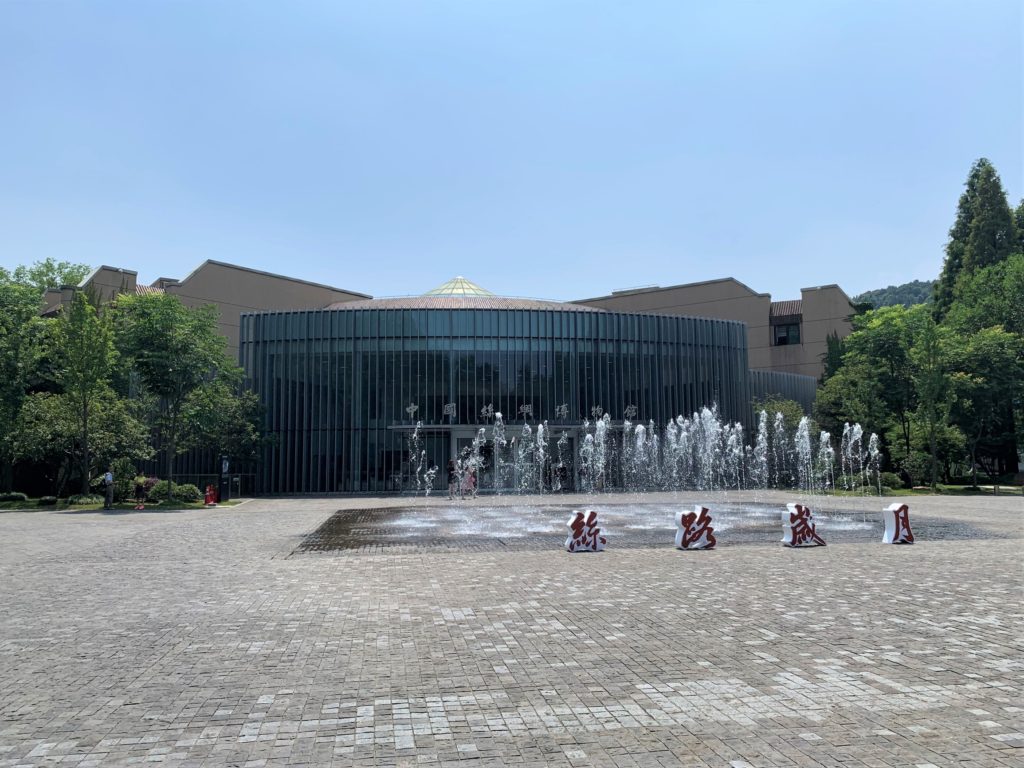

I decided that I would only visit indoor attractions for the rest of the day, so I walked to China Silk Museum (中国丝绸博物馆). Entry is free. Silk fabric has been manufactured in Hangzhou for thousands of years since the Neolithic period, and later it became a strategic hub along the famous Silk Road. I have an obsession with maps; I love them and I look at them when I am bored. So this museum was therapeutic in terms of sending me to my happy place after the traumatic incident.
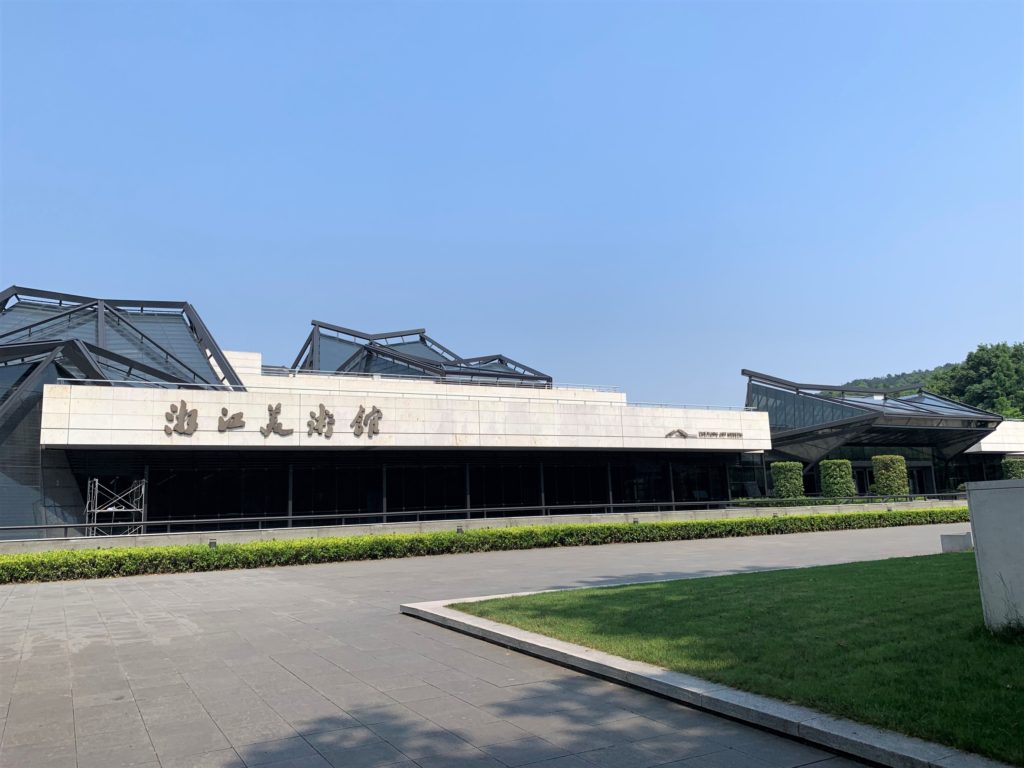
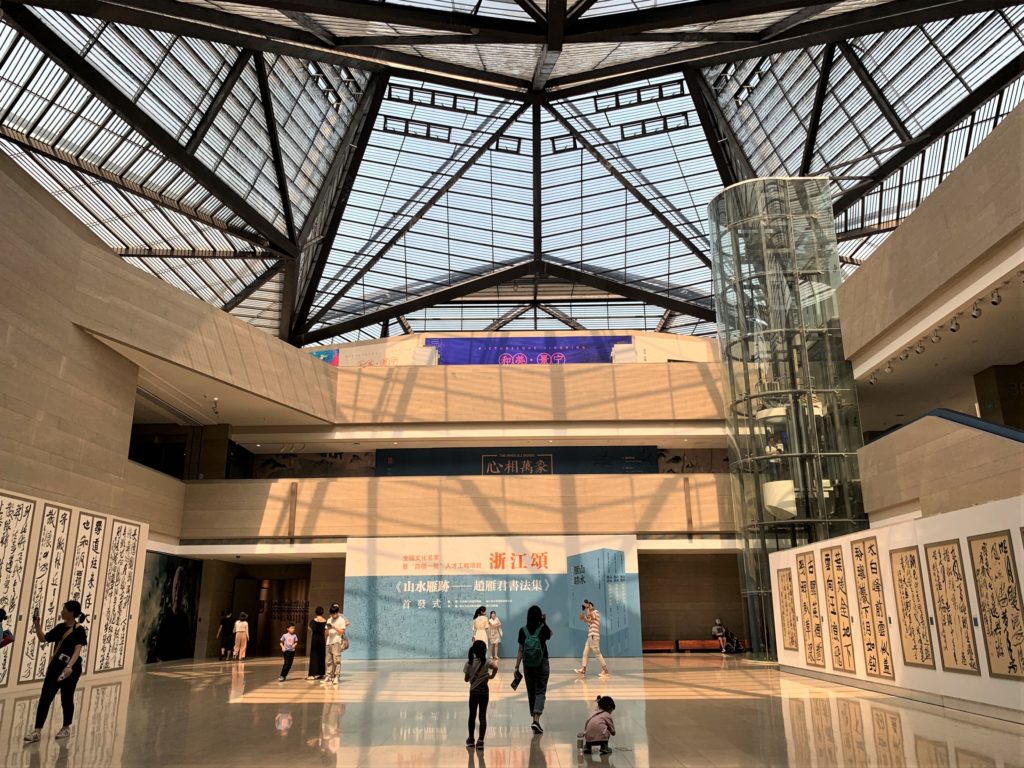
When I left, conveniently located outside of the Silk Museum was a single Hellobike. I couldn’t decide if it was taunting me to cycle again (who’s crazy). So what does one do to a taunter? One rides it. Stockholm syndrome alert. Along the way I saw Zhejiang Art Museum (浙江美术馆) on my right, so I thought, eh why not. Entry is free. Most of the works were Chinese paintings. I just really enjoyed the air-conditioning.

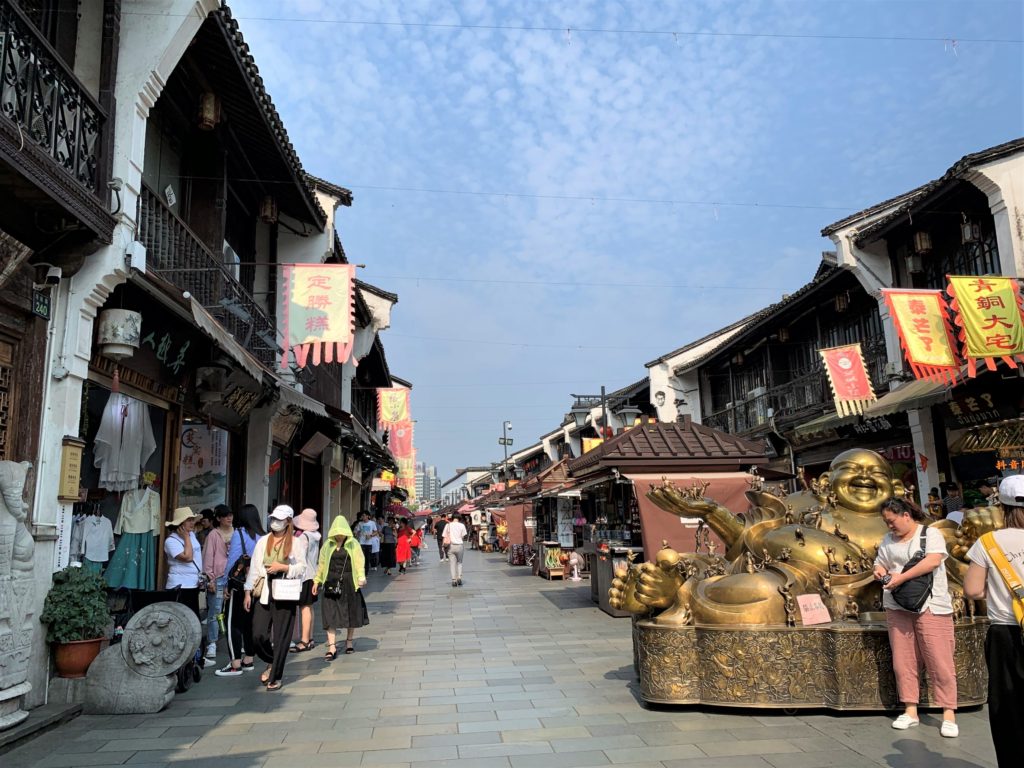
Time to head back to my hostel for check-in. I properly walked through Hefang street this time, but it was mostly your usual touristy food and souvenirs. Don’t forget your bubble tea fix!
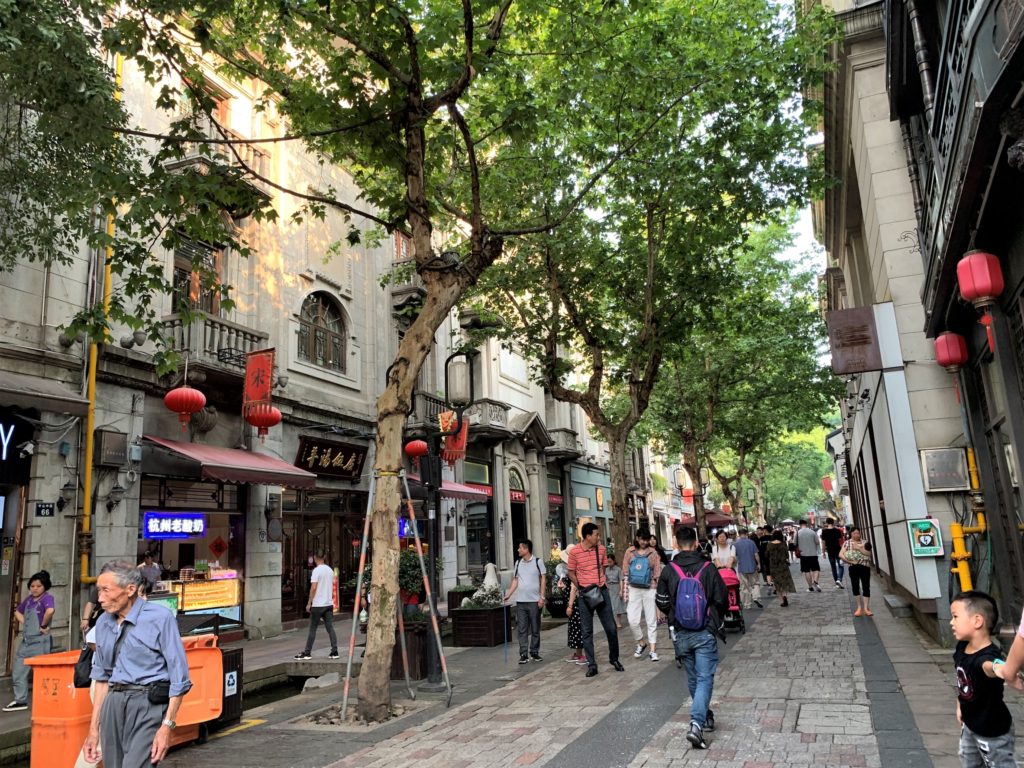
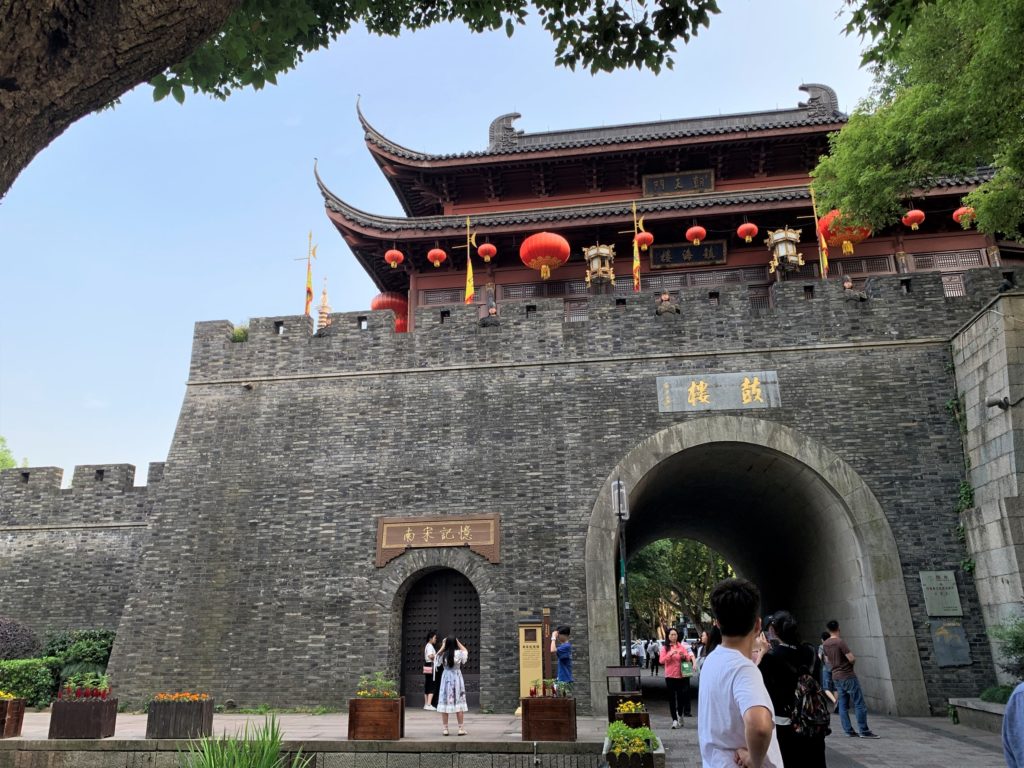
There are several other shopping streets that branch out from Hefang street worthy to check out. Hangzhou Museum (杭州博物馆) is also nearby. A Drum Tower (鼓楼堂) stands at the end of the pedestrian zone.
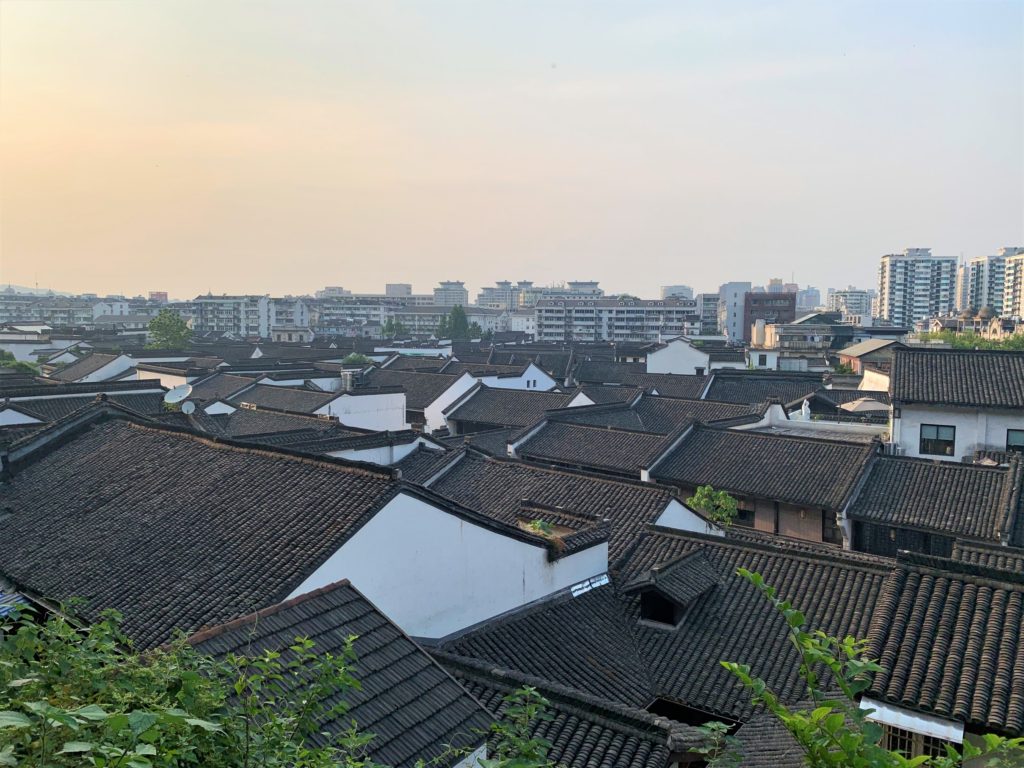
Beside the Drum Tower there was a sign that wrote Wugongshan (伍公山), which led to an empty old flight of stairs. Nobody seemed to be going there so naturally I had to. At the top there was a nice view of all the buildings and commotion below. The path was gradually overtaken by sharp bushes, but I charged through them and somehow emerged in an alley near my hostel. Magic.
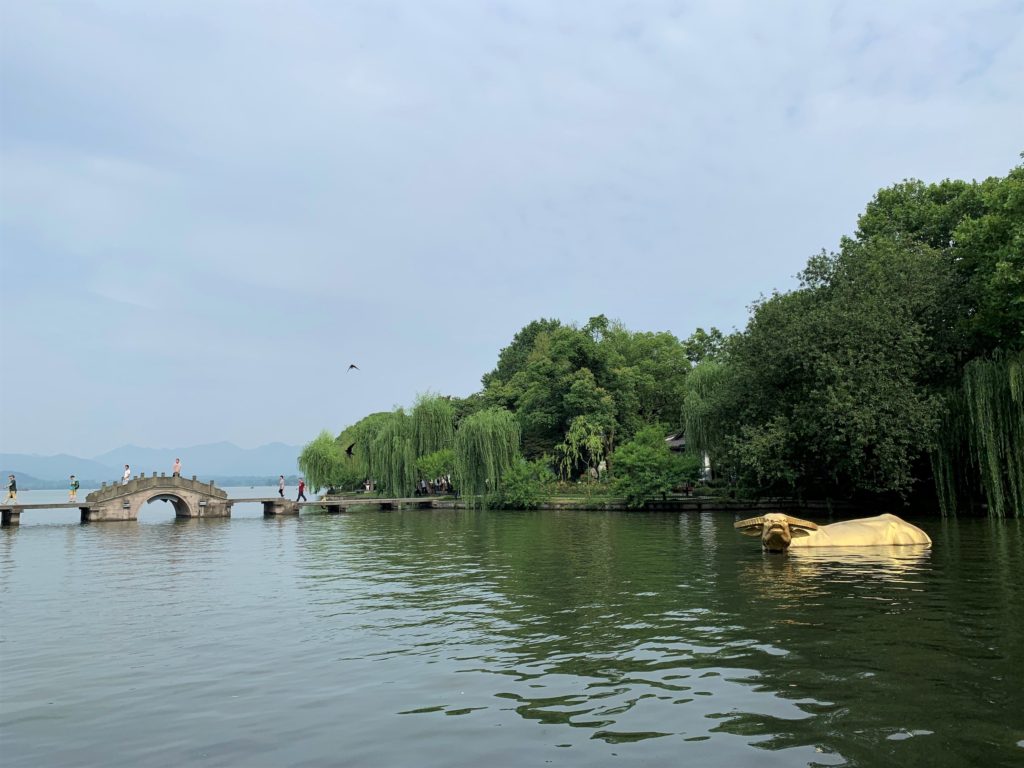
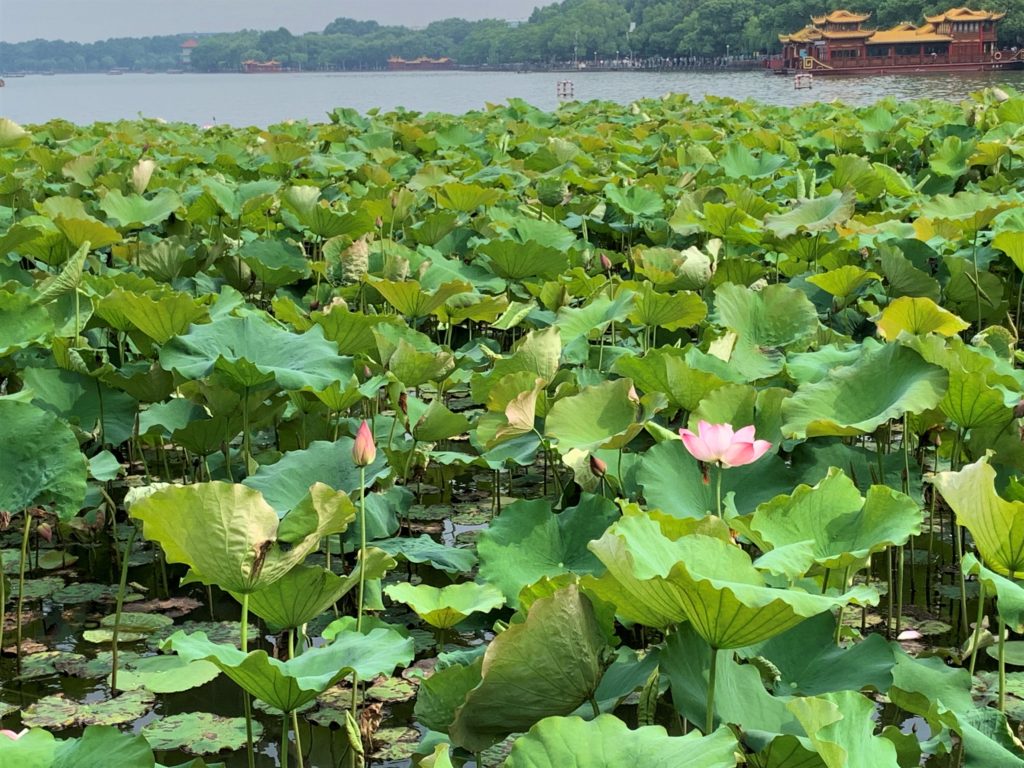
I checked out early the next morning and left my bag at the counter while I went out again. The staff at YHA Hangzhou were very friendly. Side note, bath towels required a RMB20 deposit. I am also happy to report that my bee sting had subsided. It was a Sunday today, which meant even bigger crowds. I walked back to West Lake to cover the attractions around its north perimeter.
So, you want to hear some legends? Legend has it that during the Han dynasty in the third century, whenever West Lake dried up, a golden buffalo would emerge and spew out water until the lake became full. One day, some people decided to catch the golden buffalo by draining out the lake. The golden buffalo became angry and produced so much water, it drowned all of them. Since then, West Lake has never run dry, and the golden buffalo was never seen again. Moral of the story is, champion animal rights.
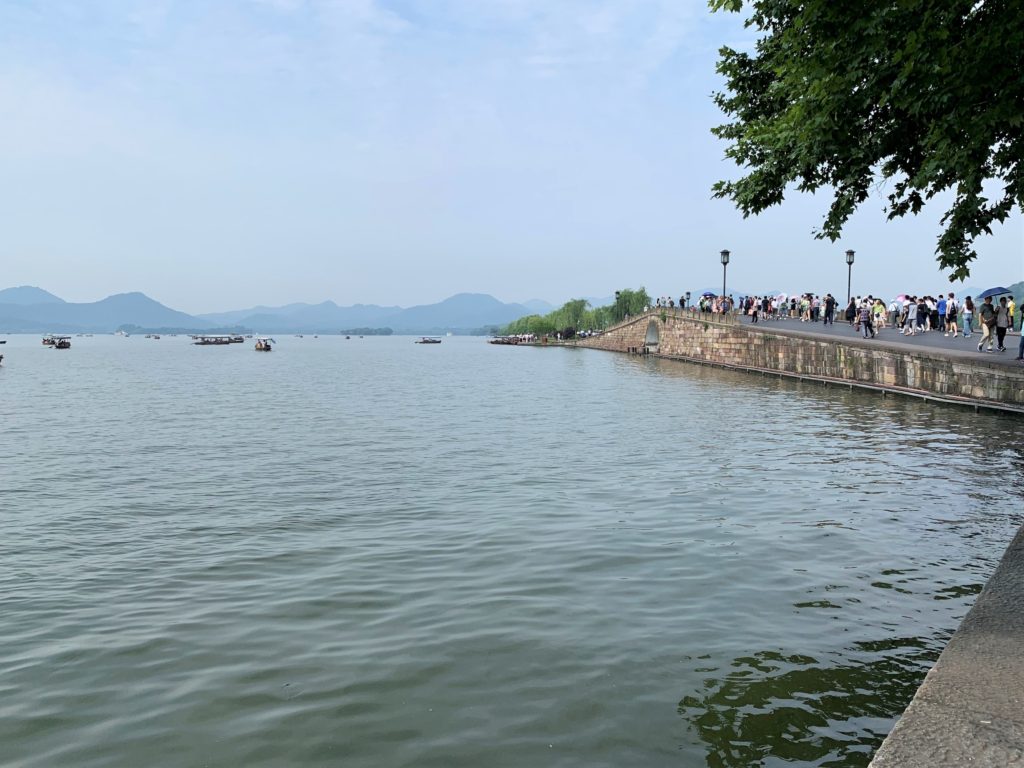
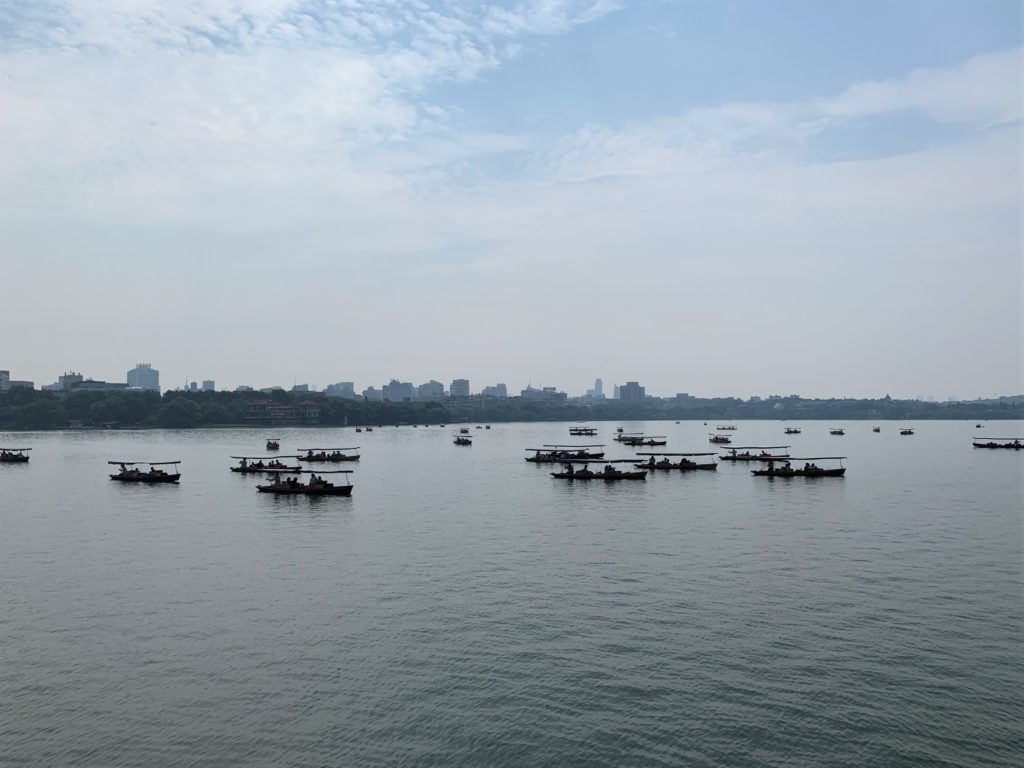
Here is another legend. Once upon a time there was an evil snake spirit called Bai Suzhen, who used magic to transform herself into a woman. One day, as she was hiding under Broken Bridge (断桥) from the rain, a young scholar called Xu Xian offered her his umbrella. They fell in love, but alas, the union between spirit and man was forbidden. Fa Hai the monk discovered their scandalous relationship, and imprisoned Xu Xian. Bai Suzhen tried to save him, but she was defeated in battle with Fa Hai (imagine period Chinese drama magic fight scene). Then Fai Hai trapped her in Leifeng Pagoda. The end. Moral of the story is, there are no happy endings.
Today, many visitors walk Broken Bridge to remember where Bai Suzhen and Xu Xian first met. Otherwise, it is a pretty unremarkable bridge. Let me correct that, super unremarkable. If you did not know its story, you would be confused why so many people were crossing it. I continued walking on.
Pro tip: you can get a free personalised souvenir at Zhejiang Provincial Museum (浙江省博物馆). At the entrance, there is a machine where you can choose a traditional Chinese painting design to print out as a bookmark, with your name on it. You have to do it through Wechat though, so the name printed will be the one you set on Wechat.
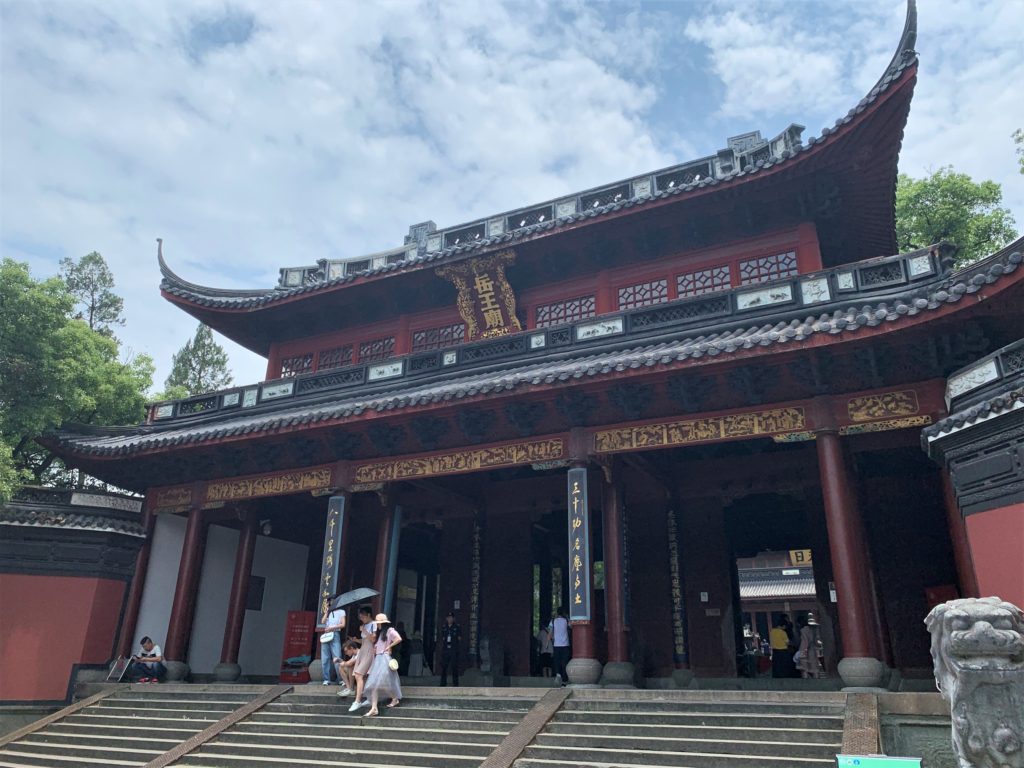
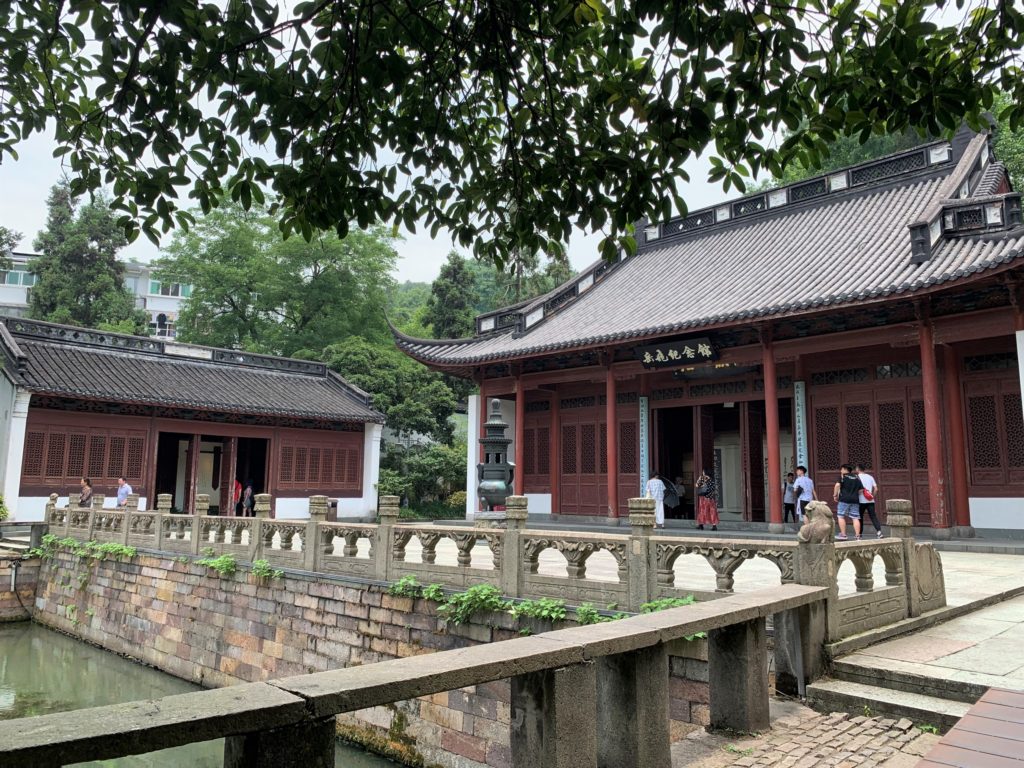
Walking on to Yue Fei Temple (岳飞庙). Entry for students is RMB12.50. I couldn’t figure out why the name sounded so familiar, but I think he appeared in my primary school Chinese textbook. Yue Fei was a general in the Song dynasty who was known for his fierce loyalty and back tattoo “尽忠报国” meaning to serve the country with utmost loyalty, inked by his own mother. Today, his resting place is in Hangzhou. Pay attention in class kids, education allows for better appreciation of the world.
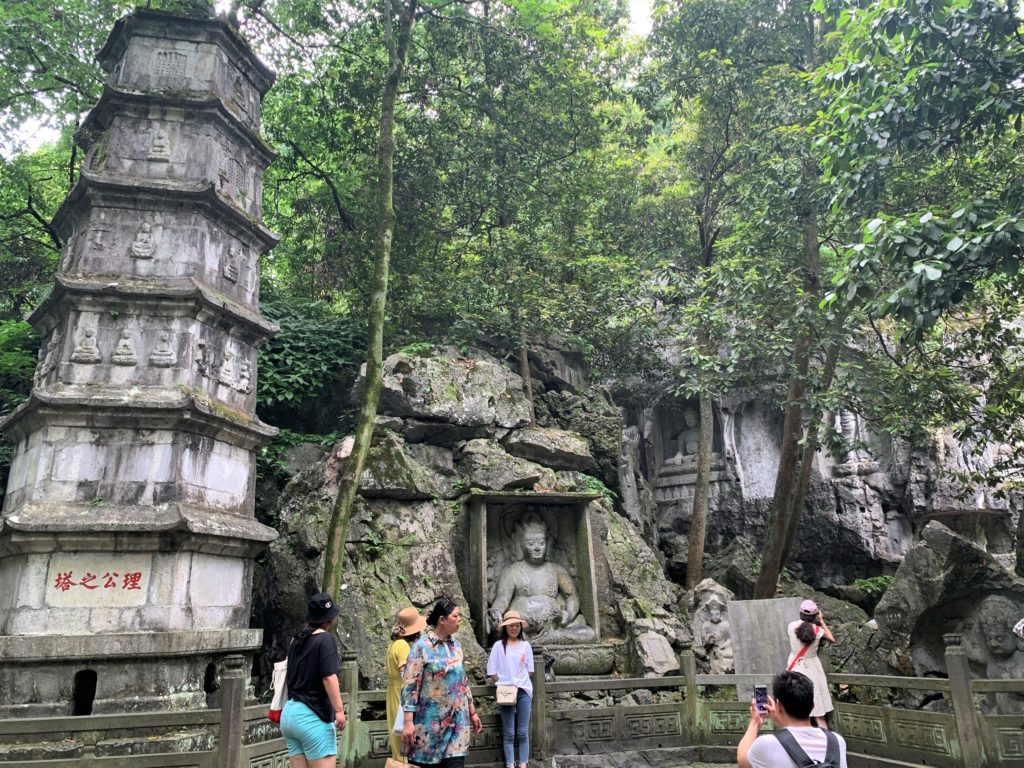
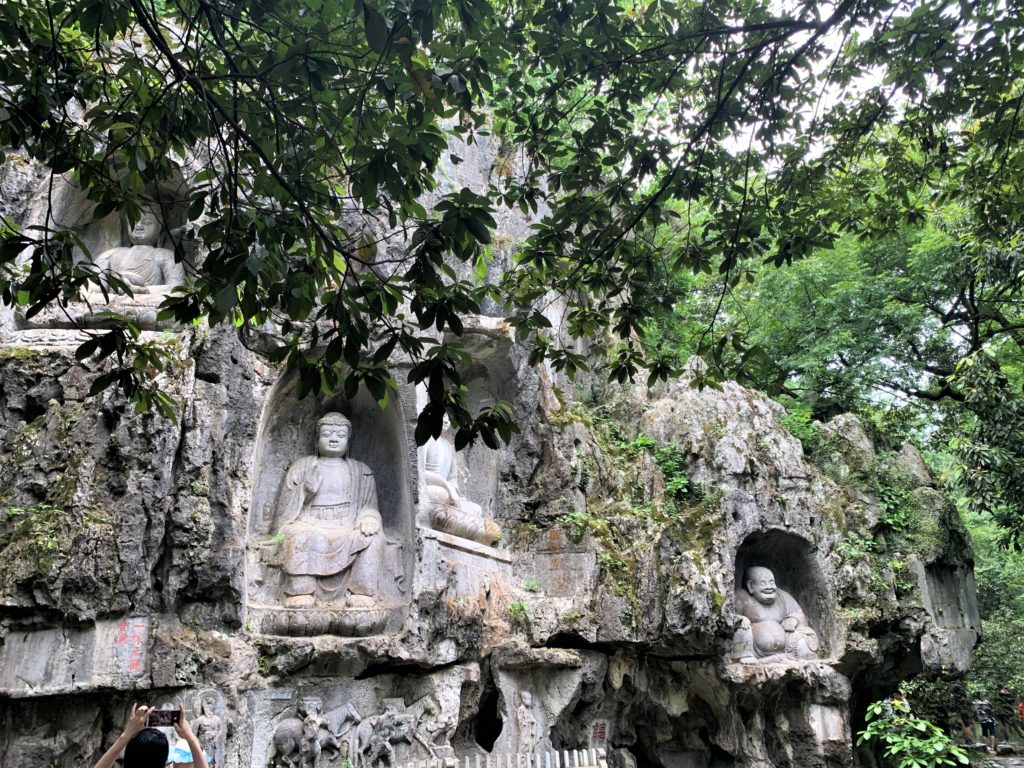
Here comes my favourite attraction in Hangzhou, the Buddhist grottoes in the Feilai Feng Scenic Area (飞来峰景区). This does not even crack the top 10 grottoes in China, with the most famous one being the Mogao Caves in Dunhuang, but it is visually stunning enough for me. Getting to Feilai Feng on bicycle was a teensy bit crazy. It was 20 minutes of uphill on a narrow, winding, single lane road for cars. Just take the public bus up. I had to pay the full price of RMB45 for Feilai Feng even though I had a Chinese student card. The person at the ticket counter said it was only for Chinese students, which I am pretty sure is not the case. My student card was never rejected at any other attraction.
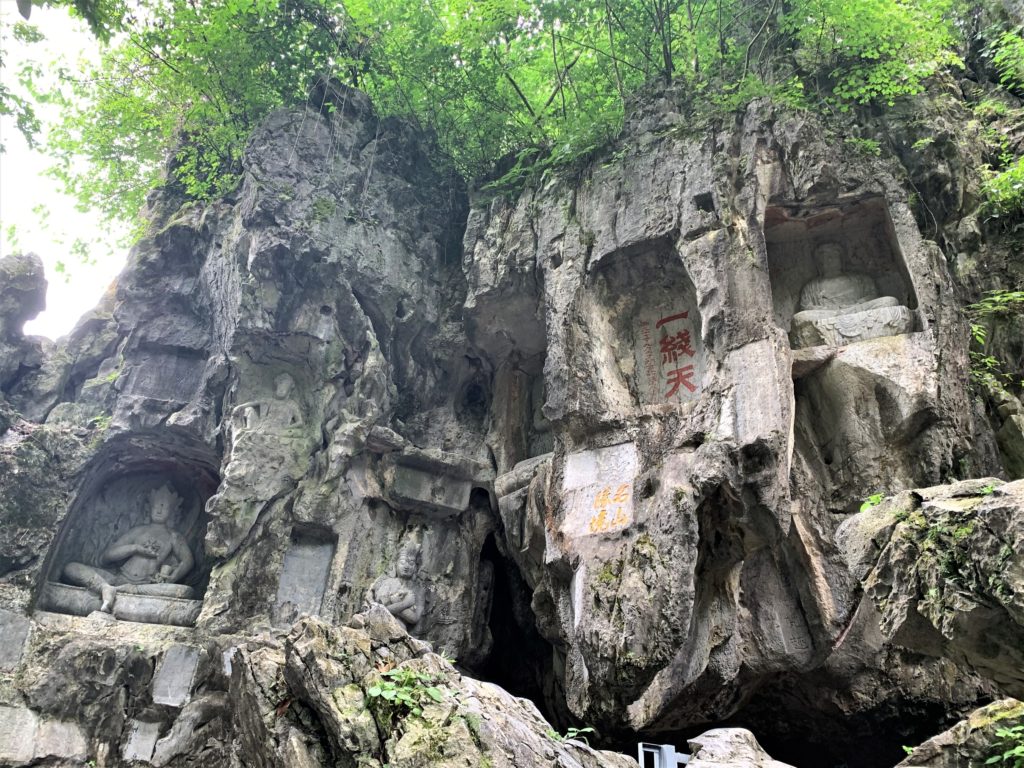

Lingyin Temple (灵隐寺) is located within the Feilai Feng Scenic Area, but entry into it requires another ticket. A student ticket costs RMB15. The temple compound is huge and has multiple halls for praying.
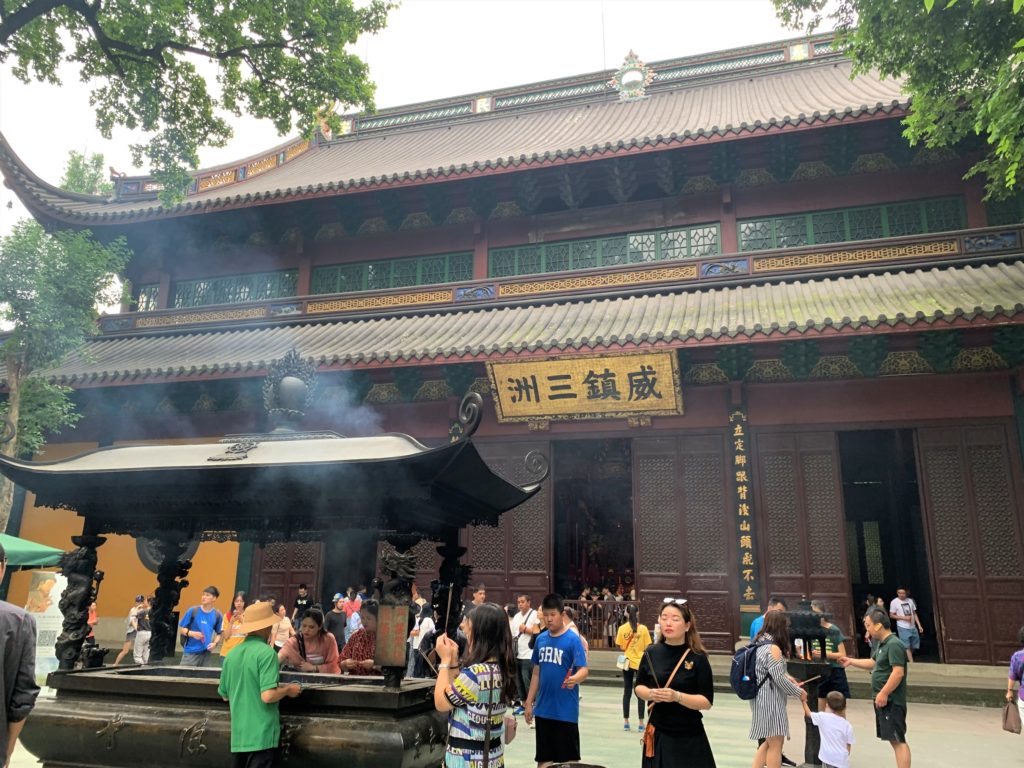
Not that you guys would even second think this, but if you are going to Liuhe Pagoda (六和塔) from Feilai Feng, just take a Di-di. I cycled 8km to Liuhe Pagoda, but was misdirected to a tunnel which bicycles cannot enter, then had to recalibrate, all while navigating steep uphill and downhill slopes on a road for cars.
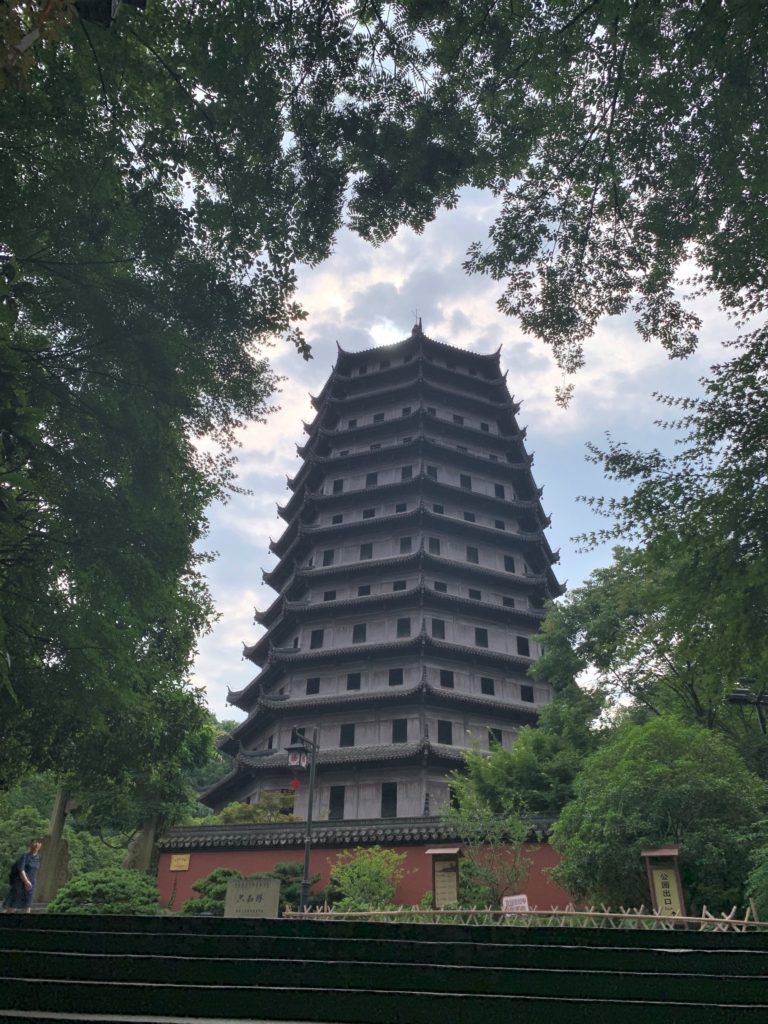
Entry to the Liuhe Pagoda compound is RMB10 for students, plus an additional RMB5 to climb it. Double that for the normal price. It was strangely empty of local tourists. There was, however, a large group of Colombian students presumably on a school exchange trip. Not that I speak Spanish, I recognised the flag they were waving; very patriotic. The pagoda is made of wood and has a steep spiral staircase inside. Take a breather at the top to admire the view of Qiantang River.
Afterwards, I strolled along the river until I came across a Hellobike, then cycled 40 minutes back to my hostel to collect my bag. Then it was a 30 minute walk to Hangzhou Railway station for my slow train at 19:39. The train was packed to the brim. The aisle was filled with passengers sitting on their luggage or standing. Standing tickets are sold after the hard seats run out, and are usually bought by people who booked at the last minute but desperately needed to get on the train. I was stunned by how crowded a carriage was allowed to be. When we reached Shanghai South, I sprinted towards the metro station and managed to catch the last train back home.

Hi! I am Joey, a University student from Singapore, attempting to show my appreciation for the world’s most powerful passport by literally milking its visa-free benefits one country at a time. I describe my travel budget as shoestring and travel style as audacious.

Slide into my comments section...